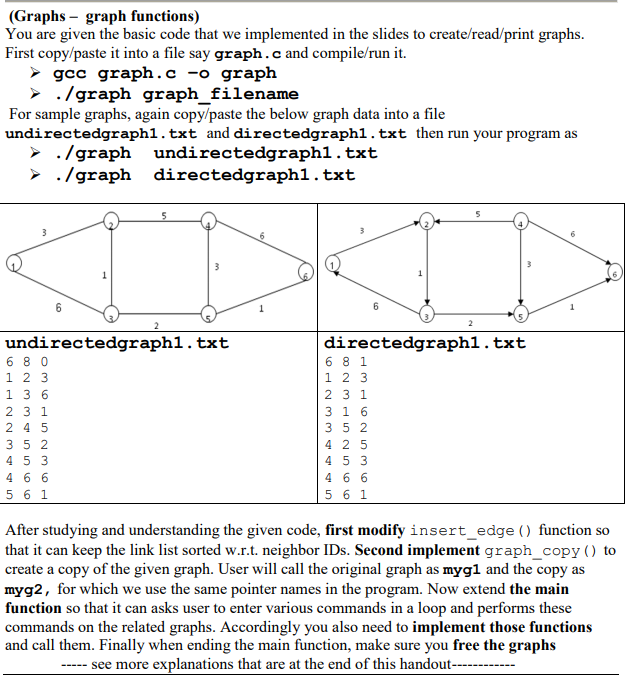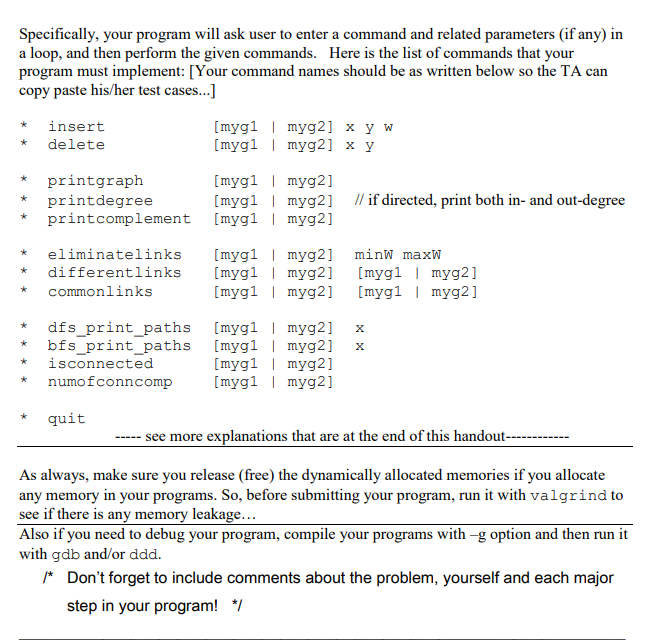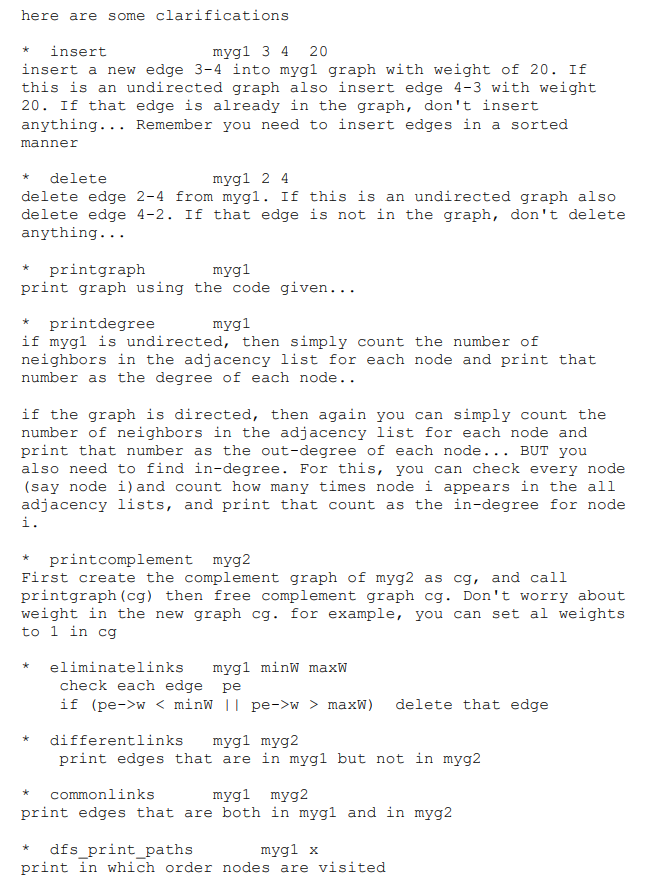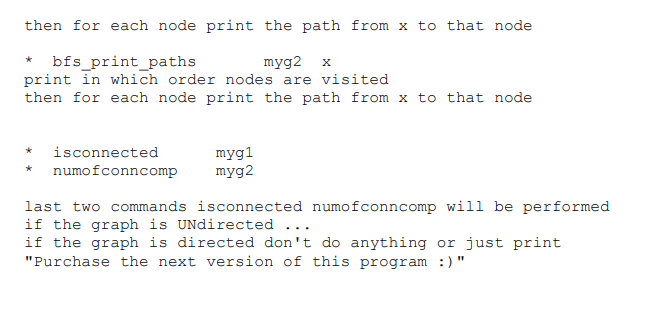Question
graph.c #include #include typedef enum {FALSE, TRUE} bool; #define MAXV 100 typedef struct edgenode { int y; int weight; struct edgenode *next; } edgenodeT; typedef
graph.c
#include
typedef enum {FALSE, TRUE} bool; #define MAXV 100 typedef struct edgenode { int y; int weight; struct edgenode *next; } edgenodeT;
typedef struct { edgenodeT *edges[MAXV+1]; int degree[MAXV+1]; int nvertices; int nedges; // number of directed edges.... bool directed; } graphT;
void initialize_graph(graphT *g, bool directed); void read_graph(graphT *g, char *filename); void insert_edge(graphT *g, int x, int y, int w); void print_graph(graphT *g, char *name); void free_graph(graphT *g); graphT *copy_graph(graphT *g); // put prototypes for other functions here....
int main(int argc, char *argv[]) { graphT *myg1=NULL, *myg2=NULL; if(argc
// first implement copy_graph function and call it here myg2 = copy_graph(myg1); print_graph(myg2, "myg2");
// NOW in a loop get commands and // call related functions to perform them...
free_graph(myg1); }
void initialize_graph(graphT *g, bool directed) { int i; g->nvertices = 0; g->nedges = 0; g->directed = directed; for (i=1; iedges[i] = NULL; for (i=1; idegree[i] = 0; }
void read_graph(graphT *g, char *filename) { int i; int n, m, dir; int x, y, w; FILE *fp; if((fp=fopen(filename,"r"))==NULL){ fprintf(stderr, "Cannot open the graph file"); exit(-1); } fscanf(fp,%d %d %d, &n, &m, &dir); g->nvertices = n; g->nedges = 0; // insert function will increase it; g->directed = dir; for (i=1; i
void insert_edge(graphT *g, int x, int y, int w) { edgenodeT *pe; pe = malloc(sizeof(edgenodeT)); // check if NULL pe->weight = w; pe->y = y;
// YOU MUST MODIFY THIS FUNCTION SO IT WILL KEEP LINK LIST SORTED // W.R.T. NEIGHBOR IDs.
pe->next = g->edges[x]; g->edges[x] = pe; g->degree[x]++; g->nedges++; }
void print_graph(graphT *g, char *name) { edgenodeT *pe; int i; if(!g) return; printf("Graph Name: %s ", name); for(i=1; invertices; i++) { printf("Node %d: ", i); pe = g->edges[i]; while(pe){ // printf(" %d", pe->y); printf(" %d(w=%d),", pe->y, pe->weight); pe = pe->next; } printf(" "); } }
void free_graph(graphT *g) { edgenodeT *pe, *olde; int i; for(i=1; invertices; i++) { pe = g->edges[i]; while(pe){ olde = pe; pe = pe->next; free(olde); } } free(g); } graphT *copy_graph(graphT *g) { graphT *newg;
// I simply return the same graph as a copy // but you really need to dynamically create // another copy of the given graph
newg = g; return newg; }




Step by Step Solution
There are 3 Steps involved in it
Step: 1

Get Instant Access to Expert-Tailored Solutions
See step-by-step solutions with expert insights and AI powered tools for academic success
Step: 2

Step: 3

Ace Your Homework with AI
Get the answers you need in no time with our AI-driven, step-by-step assistance
Get Started


